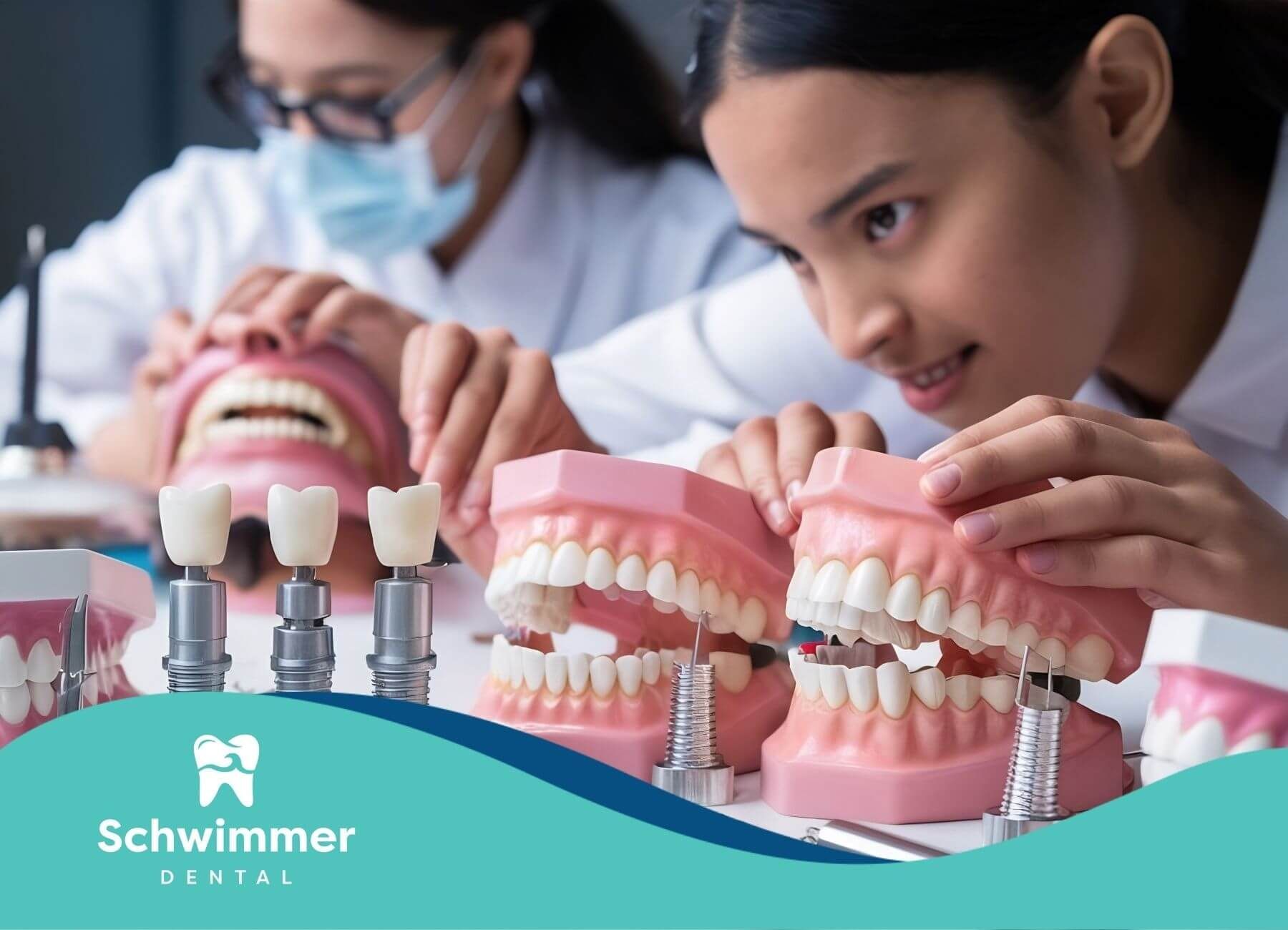What Everyone Should Know About Invisalign Cleaning Instructions
Invisalign aligners combine convenience and discretion for patients seeking a straighter smile. Clear plastic trays fit snugly over the teeth, but they require careful maintenance. These Invisalign cleaning instructions help ensure that aligners remain clear, odor-free, and effective throughout treatment. Readers will find practical advice for daily care, weekly deep cleaning, product recommendations, and tips on avoiding common mistakes. Proper care extends the lifespan of each tray, reduces the risk of staining, and prevents bacterial buildup. By adopting a consistent cleaning routine, patients of all ages can enjoy a smooth orthodontic journey.
Understanding Invisalign Trays
Before diving into care routines, it helps to know what makes Invisalign trays unique. Each aligner is crafted from a thin, medical-grade thermoplastic material that is BPA-free and latex-free. This composition offers the right balance of flexibility and strength, allowing the tray to apply gentle, controlled pressure to the teeth at each stage of treatment.
Aligners are custom-fabricated from a digital scan of the patient’s mouth. As teeth shift incrementally, trays are swapped out every one to two weeks. Because the plastic is so clear, any residue or discoloration can become highly visible. Left unchecked, bacteria and plaque can adhere to the tray surface, compromising both appearance and performance. A well-maintained aligner not only preserves its near-invisible look but also ensures the prescribed forces move teeth as planned.
Importance of Cleaning Aligners
Health Risks of Neglect
Neglecting to clean aligners properly can create a breeding ground for bacteria. Plaque trapped against teeth and gums raises the risk of tooth decay, gum disease, and chronic bad breath. Over time, untreated bacterial buildup can lead to inflamed gums and even infection, which may necessitate additional dental work.
Impact on Treatment Progress
A clean aligner fits more accurately than one coated with debris. When food particles or biofilm interfere with the snug fit, trays may shift prematurely or unevenly. That can slow tooth movement, leading to extended treatment time or adjustment appointments. Consistent cleaning practices support uninterrupted progress and help patients adhere to the 20–22 hour wear schedule needed for optimal results.
Recommended Cleaning Products
Selecting the
right tools and solutions makes daily and weekly maintenance both effective and safe. The table below highlights top-rated products and their primary uses.
| Product | Purpose | Usage Recommendation |
|---|---|---|
| Invisalign Cleaning Crystals | Deep cleaning | Soak aligners for 15 minutes once daily. |
| Soft-Bristled Toothbrush | Gentle scrubbing | Brush with mild soap at least once a day. |
| Clear Antibacterial Liquid Soap | Daily disinfecting | Use 1–2 drops on a brush for morning and evening cleaning. |
| Steraligner Cleaning Accessory | Enhanced accessory cleaning | Follow manufacturer instructions for periodic use. |
| Distilled White Vinegar | Buildup removal | Dilute 1 part vinegar to 3 parts water for a weekly soak. |
| Baking Soda | Stain and odor control | Mix 1 teaspoon in 1 cup of water for an occasional soak. |
Daily Cleaning Guidelines
A simple routine performed morning and night keeps aligners fresh and free of debris. Patients can follow these four steps each day.
- Remove and Rinse
Immediately after removal, hold each aligner under lukewarm running water to wash away saliva and food particles. Lukewarm water avoids warping the plastic, which can happen if water is too hot. - Brush Gently with Soap
Apply a drop of clear antibacterial liquid soap to a soft-bristled toothbrush. Gently brush the interior and exterior of the tray, focusing on areas where debris tends to lodge, such as the cusps and edges. - Rinse Thoroughly
After brushing, rinse aligners under running water until all soap suds and loosened particles are gone. Inspect each tray under bright light to confirm that surfaces are clear. - Reinsert Carefully
Before placing trays back in the mouth, patients should dry them briefly with a clean paper towel or a lint-free cloth. A damp aligner may attract bacteria more quickly than a dry one.
Performing this routine twice daily preserves clarity, reduces odor, and supports oral health by preventing plaque accumulation on both teeth and aligners.
Weekly Deep Cleaning Methods
In addition to daily care, trays benefit from a more thorough soak once or twice a week.
Deep cleaning removes embedded biofilm and helps maintain the plastic’s transparency.
Soaking with Cleaning Crystals
Invisalign cleaning crystals are formulated to dissolve plaque and kill bacteria without harming the tray material. To use:
- Fill a clean container with lukewarm water.
- Add the recommended packet of crystals.
- Submerge aligners completely and let them soak for 15 minutes.
- Rinse trays under running water before reinserting.
These crystals provide a convenient, dentist-approved option for patients looking to preserve aligner quality.
Alternative Cleaning Soaks
For those without access to specialized crystals, a diluted white vinegar or baking soda solution offers an effective substitute:
- Vinegar Soak: Mix 1 part distilled white vinegar with 3 parts water. Soak aligners for 15–20 minutes, then brush gently and rinse.
- Baking Soda Soak: Dissolve 1 teaspoon of baking soda in 1 cup of water. Submerge aligners for 15 minutes to neutralize odors and remove light stains.
Patients should limit these alternative soaks to once a week to avoid over-exposure to acidic or abrasive agents.
Avoiding Common Cleaning Mistakes
Even well-intentioned care can backfire if certain pitfalls are not avoided. The sections below highlight practices to steer clear of.
Avoid Hot Water
Exposing trays to water above body temperature can warp the plastic, altering fit and reducing effectiveness. Lukewarm or cool water is always the safest choice.
Skip Harsh Chemicals
Mouthwash and bleach may seem like quick fixes, but they can degrade tray material and introduce harmful residues. Mouthwash often contains alcohol that weakens plastic integrity. Bleach and other strong disinfectants should never come near aligners.
Do Not Use Toothpaste
Most toothpastes contain abrasive particles designed to scrub tooth enamel. Those same abrasives can scratch clear trays, creating microgrooves where bacteria can hide. A soft brush with liquid soap is a safer choice.
Maintaining Oral Hygiene Habits
Even the best-cleaned aligner cannot compensate for poor dental hygiene. Patients should adopt these habits to support both aligners and natural teeth.
Brushing and Flossing Routine
Teeth should be brushed for two minutes at least twice a day and flossed daily before reinserting trays. This removes food debris that could otherwise become trapped between teeth and aligners, helping to prevent decay and gum inflammation.
Rinsing Mouth After Eating
Each time trays are removed for snacks or meals, patients should rinse their mouths thoroughly with water. This step flushes away loose particles and reduces the time food debris spends against tooth surfaces.
Proper Aligner Storage Tips
When not in use, aligners must be stored safely to avoid damage and bacterial growth.
Clean the Storage Case
Cases can harbor bacteria just like trays do. After each use, wash the case with mild antibacterial soap and water. Allow it to air dry fully before placing trays inside to prevent mold or odor.
Prevent Case Bacteria and Damage
- Avoid leaving aligners exposed on countertops or in napkins, which can introduce contaminants or lead to accidental disposal.
- Keep cases away from direct sunlight, hot car interiors, or other high-heat environments that could warp the plastic.
When to Seek Professional Help
Even with strict at-home care, some issues require attention from an orthodontic professional.
Visible Stains or Discoloration
If an aligner remains stained or cloudy after consistent cleaning, patients should contact their orthodontist. Persistent discoloration may indicate microscopic scratches or material degradation that compromise tray performance.
Fit Issues and Damage
Cracks, warping, or an uncomfortable fit signal the need for a replacement tray. Promptly notifying the orthodontic office can prevent delays in treatment and ensure tooth movement stays on schedule.
Conclusion
Consistent maintenance of Invisalign trays is essential for oral health, aesthetic benefits, and treatment efficiency. A simple daily routine like rinsing, gentle brushing with mild soap, and orderly storage combined with weekly deep cleaning using specialized crystals or gentle household solutions will keep aligners in top condition. By avoiding hot water, harsh chemicals, and abrasive toothpastes, patients preserve the fit and clarity of each tray. Regular professional check-ins remain vital, especially if stains, warping, or fit concerns arise. Adhering to these guidelines supports smooth treatment progression and helps patients retain confidence in their smile every step of the way.
At Schwimmer Dental, we know that clear aligners only work their best when properly cared for. Our team provides personalized dental care guidance in Point Pleasant Beach, NJ, on aligner cleaning, fit checks, and treatment progress, ensuring your path to a straighter smile stays smooth and effective.
If you notice stains, warping, or discomfort with your trays, don’t wait and schedule your Invisalign check-up with us today and let us help you protect both your smile and your investment.
Frequently Asked Questions
How should I clean my Invisalign trays daily?
Rinse them with lukewarm water, brush gently with a soft toothbrush and mild soap, and store them in their case when not in use. Avoid toothpaste, which can scratch the trays.
Can I eat or drink with Invisalign in?
No. Always remove Invisalign before eating or drinking anything other than water. Food and beverages can stain or warp the aligners, slowing down treatment progress.
How often should I deep clean my Invisalign trays?
It’s best to deep clean your aligners at least once a week using Invisalign cleaning crystals or a gentle household solution like diluted vinegar to remove buildup and keep them clear.
SOURCES:
https://shop.invisalign.com/collections/all-cleaning-products?srsltid=AfmBOop0xxz2-XFuxxJCs01jNTf1ICnOR_nDaPc1IAZs0oevSxz1c2MU
https://www.healthline.com/health/how-to-clean-invisalign
https://www.reddit.com/r/Invisalign/comments/mzo4q2/looking_for_ideas_daily_cleaning_routine/
https://www.colgate.com/en-us/oral-health/adult-orthodontics/what-do-invisalign-braces-cost-are-they-worth-it
https://www.forbes.com/health/dental/what-is-invisalign/
https://www.aligntech.com/solutions



